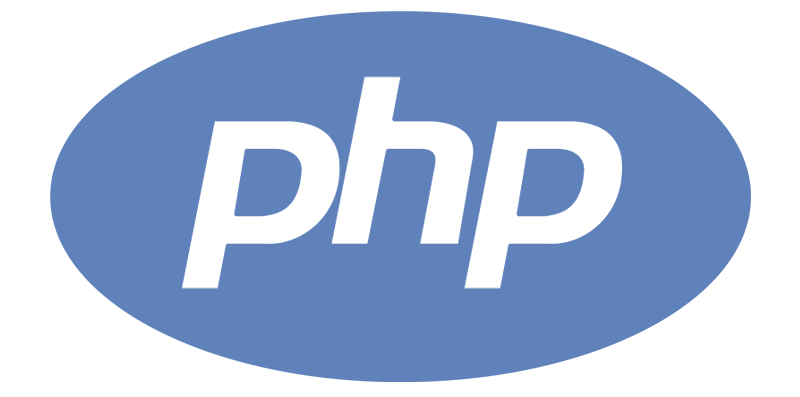Web development - a complex and time-consuming process with stages like scripting, testing, running, maintaining, and supporting. Considering that the world of technologies is continually changing, we have updated the article to highlight what changes since 2018 for you to know how to choose between Python or PHP for web development in 2022. We have also refreshed the data on PHP and Python use in the world, how these coding languages upgraded, and the goals they may fulfill.
What is PHP?

PHP, Hypertext Preprocessor, is one of the most popular scripting languages in the world used mainly for web development. Introduced in 1994 by Rasmus Lerdorf, these days PHP is widely used by 45.8% developers across the world. The PHP team constantly releases new versions, removes bugs, and introduces new features of PHP to improve the process of development. Recently, they announced PHP 8.0.0 and released new version of PHP 7.4.9 in July 2020. The represented features and updates are available for free on the official website.
This coding language can solve different complex mathematical calculations. It is considered as one of the handiest programming languages to create a database-enabled dynamic website that doesn’t require much time. However, it comes with its disadvantages along with advantages. Let's take a look at a few of them.
5 Strengths of PHP
Cross-platform. The developer who codes on PHP has no need to stick to a particular operating system as PHP allows us to run the app on any. It is used on the server-side widely and compiles with APACHE and IIS.
Easy to use. The syntax is quite similar to C programming language, so if a developer has experience in C, it won’t be difficult to learn the PHP aspects.
Speed. The amount of time needed for web development remains decisive factor while choosing the tech stack. With new PHP versions 7.2.33 and 8.0.0, the operating time is 2 times faster if compared to old ones like 5.0.
Database connectivity. Not only PHP offers the access to more than 20 databases but also provides solid connectivity to those via built-in modules.
Simple maintenance. Due to MVC (Model View Controller) the script create in PHP can be used and maintained easily. This architecture allows developers to maintain files separately by spreading them to different modules.
5 Weaknesses of PHP
Global Extensions. PHP requires bridges to the C code to be installed to be executable. To do this, developers have to modify the global config file. Due to this fact, it is quite difficult to get available extensions in hosted app scenarios.
Poor security level. Due to its open-source feature, PHP is commonly claimed as the language with bad security. The bugs appear too often and PHP team is always in a rush to fix them.
Complex and time-consuming process. Even though PHP is a recognized and admired language, more and more novice developers are more willing to learn Python due to its simplicity and increasing popularity.
Top Websites Built With PHP
Wikipedia;
Tumblr;
Yahoo;
Flickr.
Top PHP Libraries
As we can see, some of the biggest and recognized web platforms have been developed on PHP. Why is it so popular? PHP code can be simply improved with a wide range of frameworks and templates that can add some new features to the website. On the other hand, writing PHP code is a really boring and time-consuming business so quite often developers require to use PHP libraries. Let’s explore some of these.
PHP CPP Library. This one is a C++ lib that can be very useful when you need to develop PHP extensions. PHP CPP comes with user-friendly classes, which can help experts make a native extension for PHP. It also has well-made documentation to facilitate library handling.
Mink. The library is used to test web applications and understand how it interacts with the browser properly. It can remove the API differences between types of browser emulators, thus Mink giving an accurate testing environment. Moreover, it complies with Symfony2, Behat, and PHPUnit support.
Faker. If you are looking for a good library that will create well-made XML docs, bootstrap the existing database, anonymize data that is taken from a production service, or for any kind of operation that uses generated fake data, Faker is a great solution.
Geocoder.The library that is used for designing GPS-based applications. The abstraction layer, provided by this library is well down for geocoding manipulations. Geocoder is split in Provider and Http Adapter and is notably extensible, thus remains best for web development.
Ratchet. With this library, you can build bi-directional, real-time applications between servers and clients over WebSockets. With Ratchet you can build an event-driven application efficiently and quickly.
What is Python?

In terms of web development, Python is a high-level, object-oriented, interpreted programming language and is best for making websites. Due to its in-built data structures as well as dynamic typing and binding, Python enables Rapid App Development. It is also suitable for integrating different components of the existing code into one.
Besides its simple learning curve, Python offers numerous packages and modules that enable code reuse. The use of this coding language by the global developers’ community is incredible: as of 2019, 73.1% of Python specialists used this technology. Therefore, it’s safe to say that Python is good for web development.
5 Strengths of Python
Solid libraries’ support. Python comes with a variety of different standard libraries that cover such fields as web service tools, Internet, protocols, operating system interfaces, etc.
Integration Feature. It is easy to develop web service by calling COBRA or COM components due to the enterprise app integration.
Efficiency. Since Python comes with a rich set of integration features, extensive control capabilities, and unit testing framework, you can easily improve the speed of your applications and its productivity. It is extremely useful, especially when it comes to building scalable network apps.
Third-party modules support. PyPi provides a wide range of third-party modules enabling integration with other platforms and languages.
5 Weaknesses of Python
Speed limitations. Due to the fact that Python is interpreted, it shows weak results when it comes to its line-to-line execution.
Mobile computing. From the perspective of the server-side language, Python is a brilliant specimen. However, it is not widely used on the client-side. Due to this, it is rarely used when it comes to the building of a smartphone-based app.
Weak database access layers development. Comparing to such technologies like Open Database Connectivity (ODBC) and Java Database Connectivity (JDBC), Python’s database access layers are considerably weak.
Top Websites Built With Python
YouTube;
Google (widely used in data science and machine learning projects);
Reddit;
Instagram.
Top Python Libraries
TensorFlow is an open-source Python library that was designed for dataflow programming with multiple tasks. It is widely used in machine learning apps by Google and a big number of science companies.
Requests. This library allows a developer to send organic HTTP requests, without the need for manual work. You don’t have to add query strings into URL or to suffer for your POST data.
OpenCV. This library is a perfect solution for commercial and academic use. It comes with Python, C++, and Java interfaces.
PHP vs Python For Web Development [Comparison]
Now, as we defined each technology, it is time to move on to find out the difference between Python and PHP. We will investigate which is best for web development PHP or Python and how to decide between two considering performance, popularity, salary rates for developers, frameworks within each, and CMS.
Performance
It is not a secret that PHP 7.x is pretty fast. A website runs almost 3 times faster than a regular program written in Python. Performance speed can be a cornerstone for critical application. For example, if your core banking system performs a million processings on a daily basis, you’ll definitely want it to work 3 times faster to improve customer’s experience. Thus, in terms of performance speed, PHP is an unquestionable leader, leaving Python far behind.
However, note that in case if your application is simple, the scale is low, so time lag is not that significant. Say, that you’ll not feel the significant difference between 30 and 10 milliseconds for your general purposes.
Popularity
Both technical stacks are common while web development. PHP is used by 25.8% of developers, and Python is utilized by 73.1%. Both languages power such websites like Wikipedia, Tumblr, Yahoo, and Flickr as well as Facebook.
The peak of Python’s popularity was gained when Google considered Python for powering a number of its big projects. Since then, a wide range of industry giants, such as Spotify, Instagram, YouTube, Pinterest, and Reddit started deploying Python to power their platforms.
Today, you can see dozens of new projects started on a daily basis both with PHP and Python, so the current competition can be considered as “neck to neck”.
Salaries
A world-known model outsourcing allows you to hire top specialists from around the globe. For instance, many companies from West Europe tend to outsource their software development services in East Europe, which gives them smart costs, excellent quality, and innovative ideas. Let’s see a comparison between PHP and Python salaries in different countries based on PayScale results.
United States | Ukraine | Australia | |
$64,271/yr | $25,890 | $54,141 | |
$66,804/yr | $28,139 | $57,810 |
As you can see, clearly, outsourcing to Ukraine considerably saves your budget. Despite such low labor salary rates, numerous countries admitted that Ukrainian developers allow them to create cutting-edge products, are highly responsible and dedicated, at the same time they feel minimal cultural and language barriers in communication.
Frameworks
A framework can provide dozens of useful functions that help developers create customized products per client’s requirements. PHP comes with a wide range of frameworks that can be used to create a general-purpose website along with industry-specific apps. In this section, we are going to define the most popular and used frameworks, open-source projects, and CMSes on Python and PHP and clarify which is better for web development PHP or Python.
What is the framework and where it is used? A framework is a straightforward way to build a web application by using the capabilities of a language. The web framework is aimed to automate the overhead related to common activities that are performed in web programming. Both Python and PHP provide different web frameworks that contain useful features and capabilities. Let’s take a look at some notable web frameworks.
Top PHP Frameworks

The Most Popular PHP Frameworks
Laravel. This framework helps organize code and files, allows rapid app development, and comes with the solid and efficient documentation.
Code Igniter. It is a developer-friendly framework that works independently (in other words, it doesn't require any special support or dependencies).
Symfony. Comes with high performance due to bytecode caching.
Zend. This object-oriented framework is the best choice if you need enterprise applications that come with a wide range of components for feeds, validation, and forms.
CakePHP. This framework supports PHP 5.5+ which perfectly fits commercial web-apps development (comes with MIT license).
Top Python Frameworks

The Most Popular Python Frameworks
Django. It is a full-stack open-source Python framework that includes almost all existing useful features, that’s why 62.1% of developers are using this framework.
TurboGears. Another full-stack open-source data-driven web app framework. With TurboGears you can speed your extensible data-driven web-apps development.
Web2py. This scalable and open-source full-stack framework has its own IDE which includes a debugger, code editor, and much more.
Flask. This framework has the BSD license and originally was inspired by framework by Ruby (coding language) called Sinatra. With this framework, you can create a solid web app base. Flask is suitable for considerably app customization.
CherryPy. This is the boss in terms of minimalism in the world of frameworks. Basically, when you build a web application with CherryPy, you actually create an autonomic Python app with a separate multi-threaded server.
CMS
CMS (a Content Management System) is implemented in app or web software that are used to create or write digital content. If your project deals with e-commerce, blog, or forum, the right CMS is extremely important to make a right choice. Let’s take a look at at CMS given by PHP versus Python.
Best PHP CMS Types

PHP CMS Platforms Popularity
Wordpress. Today it is the largest blogging tool in the world that is used by millions. It opens numerous content-managing tools to organize it and create appealing web page.
Joomla! Another open source award-winning content management system. It is easy to use and extensible for general purposes.
Drupal. This CMS is built, supported and used by a huge community from all around the world.
SilverStripe. This CMS has the administration panel that allows a user to change specific parts of the site. It is built on SilverStripe Framework.
CakePHP. Last but not least, Cake is used for e-commerce platforms and beneficial as operate under MIT license.
Best CMSs by Python

The Most Popular Python CMS Platforms
Django. If you want to build a solid, ultimate and functional website rapidly, Django . It also comes with powerful user-friendly templates, so you can easily separate the design, contents and python code.
Ikaaro. As well as Django, this content management system is completely based on Python. Ikaaro offers you its juicy modules and seemingly unlimited capabilities as well as multiple GUI support.
Mezzanine. This CMS is based on Django and serves as an extension of Python's framework. It comes with a simple architecture and a solid interface for managing.
Kotti. Developers prefer Kotti because of its user-friendly nature and useful features. Another advantage is its ability to provide solid security mechanism and security-orientated approach, which scalability is enough to handle big data.
Merengue. This CMS provides a lot of pluggable tools that can be used in developing dynamic web pages writing only a few codes.
Open-Source Projects
Basically, the open-source project refers to a program that is accessible by general public for use and modification. Generally, it is collaborative projects, where programmers modify upon the open source project, share their thoughts with the community, etc. Let's take a look at some notable open-source projects in 2022, based on PHP and Python.
Notable open-source PHP projects in 2022
Composer. A dependency manager.
Monolog. Sends logs to files, inboxes, sockets, and databases.
LaravelS. Helps speed up Lumen or Laravel.
FreshRSS. A self-hostable free aggregator.
Laravel-Swoole. HTTP server that will speed up your Lumen or Laravel app.
Notable open-source Python projects in 2022
Birdseye. Simple and fast, graphical debugger.
Som-tsp. Self-organizing maps for the traveling salesman purposes.
Voluptuous. A data validation library.
Icecream. A simple print debugger for Python.
Binance-trader. An experimental cryptocurrency trading bot.
Benchmark
First of all, we should clearly understand that Python and PHP are two significantly different programming languages. They have different features, performance, and functionality. Let’s start with a simple one: PHP was designed as a fast server-side scripting programming language for web apps and comes with a lot of handy built-in features for web development as well as desktop applications.
From the other side, Python is a great high-level programming language for general purposes. Due to its simple syntax, the programmer can implement the ideas with a readable and concise code. Unlike PHP, Python does not come with such built-in features assortment that leads to numerous confusions and doubts regarding the choice between Python or PHP.
Let’s take a look at performance speed benchmark of Python and PHP from benchmarks game-team:
Spectral-norm
| Source | Secs | Mem | GZ | Busy | CPU Load |
| PHP | 7.51 | 35,364 | 1152 | 29.55 | 99% 98% 98% 98% |
| Python 3 | 120.99 | 13,424 | 407 | 479.86 | 99% 99% 99% 99% |
N-body
| Source | Secs | Mem | GZ | Busy | CPU Load |
| PHP | 71.75 | 12,072 | 1082 | 76.86 | 3% 1% 2% 100% |
| Python 3 | 567.56 | 8,076 | 1196 | 570.95 | 0% 0% 0% 100% |
Mandelbrot
| Source | Secs | Mem | GZ | Busy | CPU Load |
| PHP | 24.89 | 135,480 | 875 | 99.12 | 100% 100% 99% 100% |
| Python 3 | 163.32 | 12,080 | 688 | 642.00 | 98% 98% 98% 98% |
Fannkuch-redux
| Source | Secs | Mem | GZ | Busy | CPU Load |
| PHP | 63.18 | 44,168 | 1160 | 250.98 | 99% 99% 100% 99% |
| Python 3 | 352.29 | 12,232 | 950 | 1,392.10 | 97% 99% 100% 99% |
Binary-trees
| Source | Secs | Mem | GZ | Busy | CPU Load |
| PHP | 18.64 | 1,588,704 | 760 | 67.29 | 89% 90% 96% 86% |
| Python 3 | 48.03 | 462,732 | 472 | 174.44 | 89% 97% 88% 89% |
K-nucleotide
| Source | Secs | Mem | GZ | Busy | CPU Load |
| PHP | 20.15 | 254,792 | 1079 | 69.22 | 91% 96% 80% 76% |
| Python 3 | 46.28 | 241,108 | 1967 | 176.42 | 94% 97% 95% 96% |
Fasta
| Source | Secs | Mem | GZ | Busy | CPU Load |
| PHP | 22.82 | 12,356 | 1062 | 24.32 | 3% 2% 2% 100% |
| Python 3 | 37.32 | 846,264 | 1947 | 71.03 | 10% 67% 83% 30% |
Pidigits
| Source | Secs | Mem | GZ | Busy | CPU Load |
| PHP | 0.91 | 13,196 | 399 | 0.96 | 2% 0% 3% 100% |
| Python 3 | 1.28 | 12,024 | 567 | 1.29 | 0% 1% 100% 0% |
Reverse-complement
| Source | Secs | Mem | GZ | Busy | CPU Load |
| PHP | 7.06 | 534,336 | 446 | 11.90 | 14% 49% 40% 65% |
| Python 3 | 7.20 | 1,005,184 | 814 | 10.75 | 20% 53% 48% 29% |
Regex-redux
| Source | Secs | Mem | GZ | Busy | CPU Load |
| PHP | 1.73 | 162,348 | 816 | 3.58 | 37% 88% 44% 39% |
| Python 3 | 1.36 | 111,852 | 1403 | 2.64 | 32% 40% 33% 88% |
Well, in many ways, PHP is better than Python. The speed and performance benchmarks are affected by code compilation processing. Python`s compiler converts the code into bytecode. This process repeats each time a file is updated or created. Due to this, it is unnecessary to recompile files again and again in future which makes Python faster than PHP in terms of code compilation. However, PHP developer can just increase the speed of the applications with a wide range of caching systems.
It is possible to enhance the speed of PHP code by focusing on the algorithm, more precisely, on its implementation. There is a number of ways to do this, but first, it is important to improve app performance. Speaking of Python, a developer doesn’t have such variability, and they have to follow certain coding conventions, and it affects the speed of Python’s app.
What about the similarities? Both PHP and Python applications speed is impacted by I/O operations (input/output). For example, a number of milliseconds required to access files or database will affect the performance speed of web application in direct relation. Both PHP and Python implementations always written in C++ or C, and the number of time required to access them also affect the speed.
Security
Code written on any languages, whether PHP or Python, should present highly secured environment to guarantee that a business is protected from external threats like viruses and malware. Considering that both technologies has an open-source nature, the matter of their security is surrounded with doubts.
Python, between the two, is claimed to dominate over PHP in terms of security aspects. Most cybersecurity experts say that this language is more suitable for backend development due to a variety of tools aimed on data security. PHP, on the contrary, is constantly working on security improvement but still the issues arise from times to times.
Which is Better For Beginners: PHP or Python?
Looking for an efficient and fast coding language to design the software for your product? Let’s explore how to choose between PHP or Python for web development.
A great number of IT specialists who deal with software engineering would claims that Python is an easy-to-learn technology that, at the same time, may meet your business goals. In a fierce competition within web development world, making an app quickly and efficiently defines the success of a startup. With this in mind, it is worth noting that Python may complete a task much quicker than PHP. Moreover, Python is an excellent tool to gain results in Machine Learning, IoT (Internet of Things), Game Development, and Data Science. According to 2020 survey, Python is implemented by 66.7% of developers across the world.
In January 2020, there were approximately 26.2% PHP developers who claimed that not only they remain loyal to using PHP but also strive to level up their knowledge. PHP offers a variety of features, including developing templates, do command line coding, and make software that works on all operating systems.
Learning Curve
A learning curve is a definition of how easy or difficult it is to learn a certain language from scratch. In terms of programming languages, a learning curve includes syntax, tools and how they transform the certain design into a working code.
Python is slightly more difficult to learn if compared to PHP. As for a beginner, Python code will be more readable and understandable for a person with zero experience in coding. PHP, on the other hand, has more complicated rules which, if unfollowed, lead to crucial mistakes in code.
Python is not that tough in terms of mistakes when it comes to formatting and bugs can be easily eliminated by QA specialists. Such a state of affairs makes Python a better solution for a person, who is looking for a first programming language to learn. Furthermore, with Python, you will understand the foundation of programming. It follows from this that Python is good for web development.
PHP or Python in 2022: Outside Web Development
We already know that both Python and PHP are used in a lot of different fields, not only in web development. Let’s take a look at a few examples of their use in web scraping and machine learning.
Web Scraping
Basically, web scraping is a software technique aimed at extracting information from one platform to another. It is mostly used to make unstructured HTML data structured (spreadsheet or database). You can perform scraping both with Python and PHP, as well as with almost every existing programming language. Let’s take a look how it works with Python and PHP in a few simple examples.
Scraping with Python
Python comes with a great open-source web framework called Scrapy. Scrapy allows to extract the data from a specific web page based on XPath selectors. Scrapy helps in building, modifying and scaling large projects related to crawling. Selectos are the elements that help extract data from the website. Furthermore, it has a great speed benchmark and handles the requests asynchronously. If there is a need to adjust crawling speed, Auto-throttling mechanism will be handy.
The main features include a generated feed export in such format as XML, CSV, and JSON. It comes with a built-in support for extracting selected data from different sources with CSS and XPath expressions. Moreover, since it’s based on crawler, page data can be extracted automatically.
Why is Scrapy so good? First of all it fast, extensible and powerful cross-platform application framework (works with Linux, MacOS, Windows, and BSD). Every request is processed asynchronously and scheduled. You can upload your projects and control spiders with JSON service with a built-in service called Scrapyd.
Scraping with PHP
PHP comes with a built-in library called cURL, with which you can download media files from multiple websites. This library allows connect to multiple protocols and servers as well. With cURL you can transfer data using HTTP, FTP, etc.
Machine Learning
Machine learning became one of the demanding technologies in the tech world as well as neural networks. When it comes to machine learning, Python one of the best languages to meet its purposes due to its simplicity, power and, a variety of its frameworks that considerably facilitate the process.
Let’s take a brief look at the most popular libraries, provided by Python:
TensorFlow. A good neural network library that was developed by the Google Brain team with the Google’s MIR (Machine Intelligence Research). It is a mix between such libraries like Blocks and Lasagne and symbolic computation libs like Theano. Tensorflow models are implemented in Google photos and Google voice search.
Scikit-Learn. This library was designed to work with numerical and scientific libraries, such as NumPy and SciPy with higher efficiency. Basically, you can bring machine learning in a production system with this library.
Theano. With this library, you can optimize, define and evaluate mathematical exceptions that involve multiple arrays. However, this library is considered as the one with heaviest learning curve for today. It has a lot of features similar to NumPy, such as operational and mathematical expressions.
What about PHP? It provides PHP-ML, a fresh machine learning library that comes with algorithms, preprocessing, neural network, cross-validation, feature extraction and among others. PHP-ML requires PHP 7.1 version.
PHP vs Python for Web Applications
WIth PHP a developer may build a wide range of GUI and command-line interface applications, as well as eCommerce applications, Flash components and data representation graphics. Python, on the other hand, is perfect for creating GUI application in a quick and sophisticated way.
Let’s check out a few examples of Python and PHP web application development and how it can be implemented.
For e-Commerce Applications
Both PHP and Python are widely used in e-Commerce all around the world. Let’s figure out the specifics of their implementation.
Python for eCommerce
All e-Commerce platforms require numerous highly-reliable functionalities to make sure the business operations are running smooth and fast. If your choice fell on Python developer, Django framework promises a wide range of tools and a solid functionality which allow a developer to create a tailor-made application.
PHP for e-Commerce
PHP is the leader of eCommerce market due to its simplicity and CMSs that help handle all the operations. They are scalable and user-friendly, which is important when it comes to content management. With PHP, you can setup templates, databases, pages, and layouts.
Both Python and PHP can provide extremely secure environment for an eCommerce product with a great functionality and scalability. The decision depends on details of a project and requirements.
For Database-Driven Applications
These days, database-driven applications are used in dynamic web pages that store big volumes of data. Typically, the data within this apps should be synchronized in order to be accessible in various devices.
It is not uncommon that most of the applications these days are interacting with the database especially with RDBMS-based engines (DB engines that support SQL). Like any other languages, Python also provides native and 3rd party libraries to interact with the database. Normally you have to write SQL queries for CRUD operations.
Python and Peewee
Peewee is expressive and, at the same time small ORM with sqlite, mysql and postgresql support. Django is another framework suitable for database-driven apps and comes with its own ORM lib. Working with Peewee is easy since it has a small learning curve and footprint, thus allowing a developer to create the required app within seconds.
PHP and MySQL
With PHP, you have a wide range of database products from MS Access, PostgreSQL to MySQL and Oracle. MySQL is free and comes with the GPL license, so you get a price advantage over mostly expensive commercial options. Furthermore, it is open-source, thus bugs can be fixed immediately. Due to the fact that MySQL is natively supported by PHP, there is no need to create new modules.
The Future
Both coding languages that we discussed will always be popular due to a rich number of services they can provide. The PHP and Python teams constantly come up with new versions to add more functionalities to the frameworks and libraries, remove bugs, and meet modern needs within the tech world.
PHP is worse designed than Python. It is not as elegant as Python and not that deep if you consider it in terms of language. On the other hand, Python needs a template library to be mixed with HTML.
The learning curve of PHP is much lower than Python’s.
Python comes with better frameworks than PHP; however, PHP has a proper encapsulation.
The syntax is quite simpler in Python. Considering this aspect, the code is much more readable and it is easy to write in Python.
Python is fulfilled with simplest debugging tools, but doesn't have live docs like PHP.
Python is effective when it comes to package management. This could helpfully work as a glue between your projects. On the other hand, PHP uses curly braces for code blocks that could prevent a bunch of exceptions.
PHP can be easily adapted by former C programmers, which means that if you have C developers in your team, there is no need to hire PHO experts.
Language semantics can be changed by global configuration parameters, which could make deployment and portability much more complicated. On the other hand, Python has a lack of commercial support, despite the fact that it is an open source project.
PHPs community is much bigger than Python’s. But, with Python, it is so easy to construct applications by importing crucial functions and testing.
Python vs PHP: the Bottom Line
We hope that this article shed light on the different between these two popular programming languages. With the mentioned facts, stats, advantages and disadvantages you can make an adequate decision regarding which technology to use in order to satisfy project’s needs, industry specifics, and business goals.








 Unit 1505 124 City Road, London, United Kingdom, EC1V 2NX
Unit 1505 124 City Road, London, United Kingdom, EC1V 2NX

Comments
Leave a comment